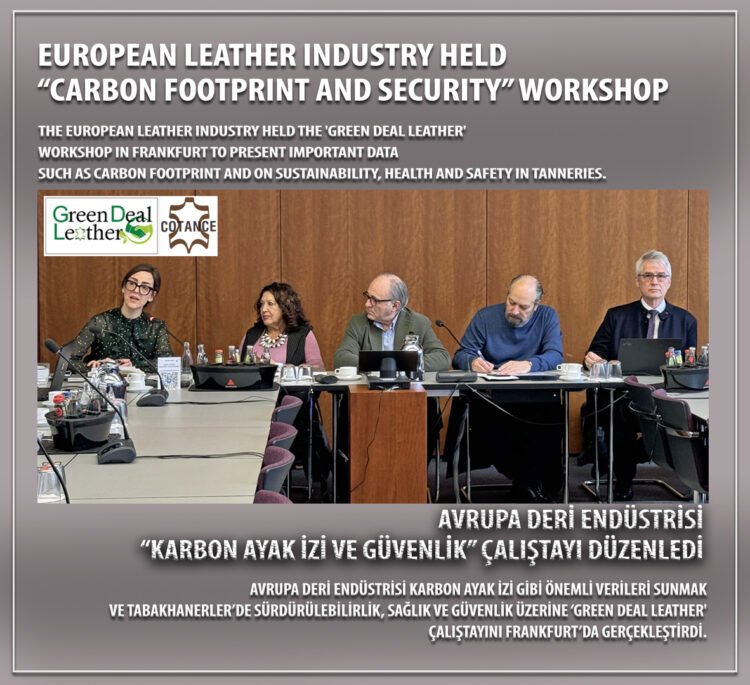The European leather industry held the ‘GREEN DEAL LEATHER’ workshop in Frankfurt to present important data such as Carbon Footprint and on sustainability, health and safety in tanneries.
The EU-funded ‘Towards Zero Negative Impact of the European Leather Industry – GREEN DEAL LEATHER’ Workshop, developed by the European tanners’ association COTANCE and the industriAll European Union, as part of the social dialogue project on the carbon footprint of cattle leather, met in Frankfurt on 25 January.
Manuel Rios, president of COTANCE, “We want our customers and consumers to understand that the carbon footprint of a high-quality leather also reflects the technology behind it and the performance characteristics provided to the leather that will ensure satisfactory use of the material over a long period of time. The actual environmental impact of leather ultimately depends on the length of service the leather champions. ”
The meeting brought together national social partners, including employers from Spain (Acexpiel), Portugal (APIC) and France. (FFTM), Austria (FVTBSL), Hungary (MKSZ), Italy (UNIC) and Germany (VDL), as well as union representatives from Germany, Austria, Italy, France, Turkey and the United Kingdom.
The meeting, held under important topics, presented information about the project work, including the calculation of the average carbon footprint of one square meter of leather using the Eco2L industry tool, which aims to provide accurate and transparent data on the energy efficiency and carbon emissions of production. Because there is so much misinformation about skin in the media, the need for real scientific data is vital.

COTANCE Secretary General Gustavo Gonzalez-Quijano, ”It is not easy for a layman to understand carbon footprint data and their environmental impact. And simply comparing a number here with a number there, without the corresponding context, often leads to incorrect conclusions. Therefore, in this study, we took utmost care to reduce the amount of information produced by Eco2L to its essentials and to provide readers with all the necessary explanations.”
With the EU aiming to be climate neutral by 2050, the leather industry and its workers are keen to play their part by producing quality leather products, optimizing the circular economy model and aiming to use the most environmentally friendly processes available. Accurate data collection and transparency are vital for Europe to become a world leader in leather production and it is hoped that this project and the new Eco2L tool will help the industry continue to produce “green” leather in Europe.

Judith Kirton-Darling, Acting Joint Secretary General of industriAll Europe, said: “We have a proud tradition of producing quality leather in Europe and, like all manufacturing sectors, we want to make the leather industry as green as possible. Employees want to make quality and long-lasting products that do not negatively affect the environment. Continued support and investment, both from consumers investing in green leather produced in Europe, and from companies and policymakers in ensuring access to equipment, green energy and skilled workers to make these products, remains important.”









